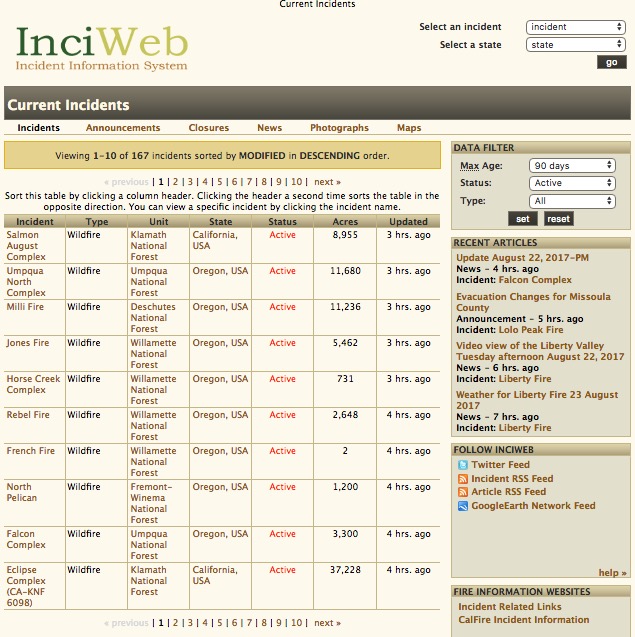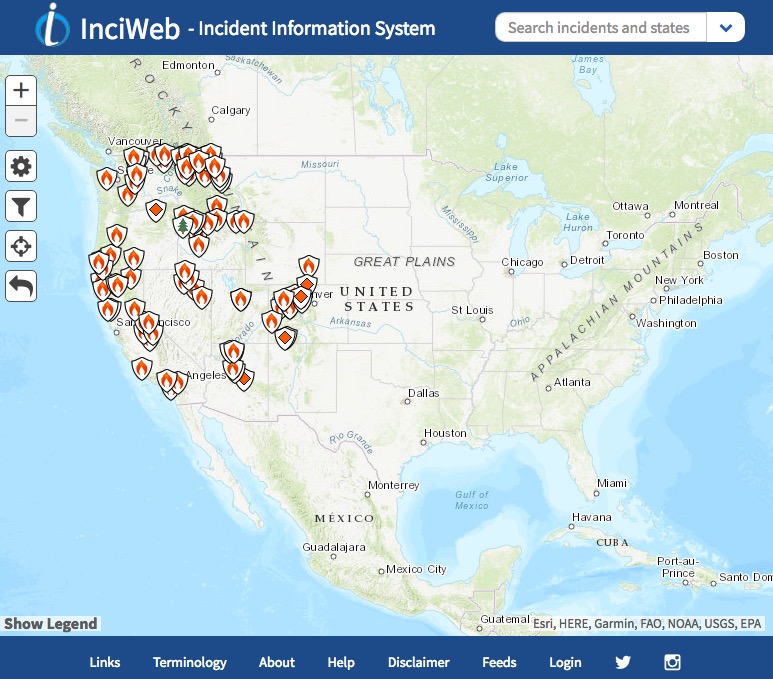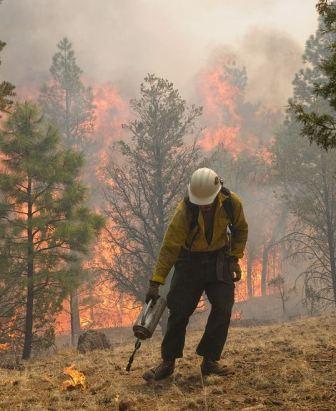We learned recently that agency personnel who post information on the InciWeb website are being told to delete media files, especially videos, when they are no longer current, and to remove all information about an incident when it is no longer active. Wildland firefighting agencies use the website to post current information about ongoing wildfires and other incidents.
There are two reasons for deleting the information according to Jennifer Jones, a Public Affairs Specialist for the Forest Service at the National Interagency Fire Center. The files need to be removed in order to free up storage space. And, in the new version of InciWeb introduced in March, 2018, there can be a clutter of icons on the map representing fires, making it difficult for the public to find the fire they are interested in.
“With the launch of the redesigned InciWeb public site”, Ms. Jones explained, “it has become an issue. Having inactive incidents still showing clutters the map and makes it hard for members of the public to find information about current active fires. In addition, since the capability to add video to InciWeb was added a few years ago, storage space for those files which can be fairly large has also become an issue.”
Ms. Jones said this policy of deleting incidents that are no longer active has always been the policy. But I have found that before the recent major change, I could use Google to search just the InciWeb site to find complete records of fires that occurred years earlier. The new version wiped out, as far as I can tell by using Google, public access to all of the fire information before March, 2018. And now that the delete-media-and-inactive-fires policy is being implemented or enforced, this important data could disappear in a matter of days after being posted.
In the last few years the prices for storage space for digital data have plummeted, so it seems odd that this can be a limiting factor on what information is provided to the public about ongoing emergencies. We should be striving for serving the public with transparency rather than purging important historic information about wildland fire events that affect millions of people.
The problem of the clutter of icons that represent fires on the interactive map on the new version of InciWeb could be mitigated by restoring the user-sortable table that worked very well in the previous version of the website.
We asked Ms. Jones about retention of the data at InciWeb. “Since its inception, the purpose of InciWeb has been to provide a ‘one stop shopping’ source of information about current wildfires” she said. “InciWeb was never set up as an official system of record and was never intended to be used for historic information or reference purposes and it has never been funded or staffed to serve those purposes.”
Before a fire completely demobilizes, the Documentation Unit Leader at the incident command post is supposed to assemble all pertinent data according to very strict guidelines established by the National Wildfire Coordinating Group. It can be a daunting task. The result can look like the two examples below, which are from a training program for incident personnel.

When InciWeb is operating properly it can be a very user-friendly environment for viewing information about an incident. Anyone with internet access can go to the site 24 hours a day, seven days a week, and with a few clicks find troves of information within minutes. This can be invaluable for citizens concerned about nearby wildfires, those learning about their environment, as well as reporters, scientists, and authors, both during and after a fire.

Now that complete records of fires on InciWeb are going to be purged after the fire is no longer active, try to picture how these people will obtain information from the official records shown in the two photos above.
It simply will be far, far more difficult than going to an internet site and finding the data in a minute or two. They could submit a Freedom of Information Act request. We have filed a few of those with the U.S. Forest Service. In one example, even after filing a FOIA, the agency refused to give us a copy of an air tanker study completed under contract by the Rand Corporation. In another case it took the USFS eight months to send us a copy of an existing non-controversial Excel file that we requested.









